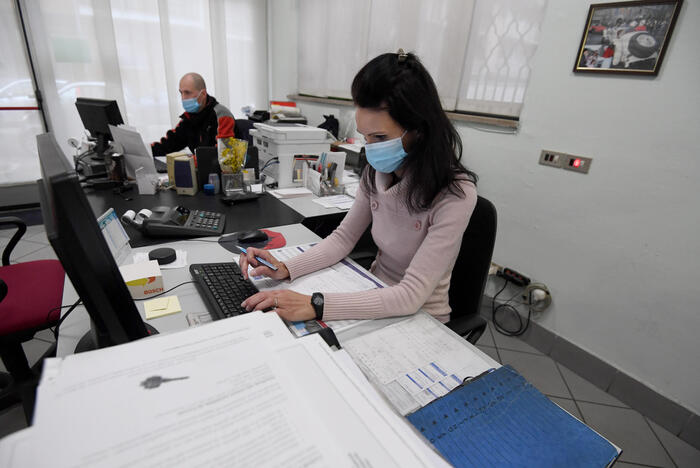EMPLOYMENT SLOWS DOWN
- In the third quarter of 2022, the labor input measured in Ula (full-time equivalent labor units) decreased slightly compared to the previous three months (-0.1% compared to the second quarter of 2022), while it slowed down growth on an annual basis (+2.7% compared to the third quarter of 2021).
Employment also
fell slightly compared to the previous quarter
(-12,000 -0.1%) and
the increase on an annual basis decreased
(+1.1% or +247,000), against a decrease in the number of unemployed (-52,000 , -2.6%) and a slight increase in inactive people aged 15-64 (+30 thousand, +0.2%).
This can be read in the Quarterly note on employment trends in the third quarter of 2022 published by Istat, the Ministry of Labour, Inps, Inail and Anpal.
WAGES REDUCING
- Comparing the changes at constant prices in the labor cost components between 2007 (the year preceding the economic crisis) and 2020, it appears that "employers' social contributions decreased by 4%, even due to the introduction of de-contribution measures, while workers' contributions have remained substantially unchanged, taxes on employees have increased by an average of 2%,
the net remuneration available to workers has decreased by 10%
".
This is what emerges from the survey "Income and living conditions" 2021, with reference, as regards income, to the years 2019 and 2020 of Istat.
THE MAJORITY OF INCOMES BELOW 30,000 EUROS
- In 2020, approximately
76% of individual gross incomes (net of social security contributions) "does not exceed 30,000 euros per year
: half of individual gross incomes are between 10,001 and 30,000 euros per year, more than a quarter is under 10,001 euros and only 3.7% exceeds 70,000 euros", underlines the survey again with reference, as regards the income, for the years 2019 and 2020. The distribution of individual gross incomes, reads the report, "shows in 2020 a substantial increase compared to 2019 in the share of incomes of the lower class (less than 10,000 euros) in particular for earned income self-employed (41.7% in 2020 compared to 35.5% in 2019) and employees (25% compared to 21.3% in 2019)." The average income from self-employment, gross of taxes and social contributions, " is equal to 24,885 euros per year, with a reduction of 5.9% compared to 2019.The net income available to the self-employed worker reaches 68.5% of the total (17,046 euros): taxes represent 14.1% of the gross income and social contributions 17.4%".
THE HIGHEST TAX BURDEN ON ELDERLY COUPLES
- In 2020, with an average tax rate of 22%, childless elderly couples "are the type on which
the greatest tax levy falls in the year in which the pandemic began, regardless of the number of earners in the family".
Households with only one (mainly) income earner from self-employment "present, along the entire income distribution, lower average tax rates than the remaining single-earner households, confirming and consolidating the relative advantage position already observed in the previous year. Among the Between 2019 and 2020, the average tax rate of households with the
sole earner of self-employment income rose from 18.1% to 17.6%".
DECREASE IN THE TAX WEDGE FOR 12.7 MILLION PEOPLE
- In 2020 "it is estimated that the reduction in the tax wedge (Irpef bonus and supplementary treatment)
affected 12.7 million people, for a total expenditure of 10.8 billion euros of transfers, equal to 850 euros per capita".
According to the survey, the tax benefit "gave more to the benefit of wage earners belonging to the upper-middle fifth of equivalent family income: 17.3% benefited the bottom fifth (the more affluent), 26.4% % benefiting the fourth fifth (i.e. the group just below the wealthiest), 24.1% to the third fifth (central body of the distribution), 20.3% to the second and 11.9% to the first fifth (i.e. the poorest)".















